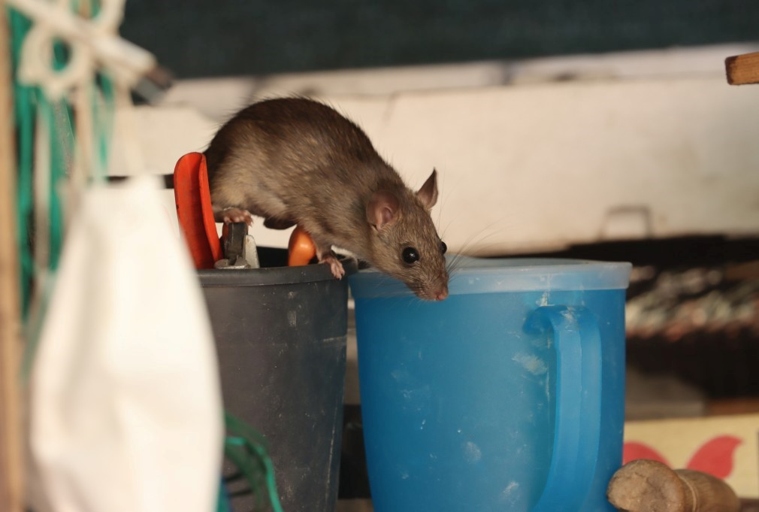Mice are not only a nuisance, but they can also be dangerous to have in your home. If you have a mouse problem, you may be wondering if they can live in couches. The answer is yes, mice can live in couches, but they are not limited to couches. Mice can live in any type of furniture that has fabric. This includes chairs, love seats, recliners, and ottomans. If you have a mouse problem, getting rid of them can be difficult.
Mice Can Live in Couches
Mice are attracted to food and warmth, so your kitchen and couch are prime real estate for these little critters. Mice are one of the most common household pests in the United States. They can squeeze through tiny openings the size of a dime, which means that your home is vulnerable to an infestation.

If you have a mouse infestation, you may notice small droppings or holes in your furniture. Mice can live in couches by nesting in the cushions or in the frame of the couch. They will also gnaw on the fabric and wood of the couch to create a nest.
You will need to seal up any openings that mice can use to enter your home. If you have a severe infestation, you may need to call a pest control company. Getting rid of mice can be a challenge, but it is possible. You can also use traps or poison to kill the mice.
How to Notice Mice in Your Couch
If you suspect you have mice in your couch, take action to get rid of them as soon as possible. Mice are relatively quiet, but if you’re paying attention you may be able to hear them moving around. If you think you might have mice in your couch, there are a few things you can look for to be sure. First, check for droppings. Mice like to nibble on things, so if you see any damage to your couch or other belongings, it’s likely that mice are the culprits. Mice leave behind small, dark pellets of feces wherever they go, so if you see any in or around your couch, it’s a good sign that mice are present. You can also look for signs of gnawing, such as gnawed holes in furniture or food packaging. Finally, listen for sounds of scurrying or squeaking.
How to Get Rid of Mice
Once they’re in, they can be very difficult to get rid of. They are attracted to homes and businesses in search of food and shelter. Mice are one of the most common household pests in the United States. Mice can squeeze through tiny openings the size of a dime, which means they can enter your home through cracks and holes in the foundation, around doors and windows, and even through the vents in your home.
Store food in airtight containers and keep it off the floor. Mice are attracted to food sources, so the first step in getting rid of mice is to remove any potential food sources. Mice are also attracted to clutter, so declutter your home and get rid of any potential hiding places.

Repair any damaged screens. Fill cracks and holes in the foundation and around doors and windows with caulk or steel wool. The next step is to seal the openings that mice are using to get into your home.
Once you have sealed the openings, you can set traps to catch the mice that are already in your home. You can also use live traps, which are designed to capture mice without harming them. The most common type of trap is the snap trap, which is a simple wooden or plastic trap that snaps shut when a mouse steps on it.
If you have a mouse problem, it’s important to act quickly. Follow these steps to get rid of mice and keep them from coming back. Mice reproduce quickly, so a small problem can quickly become a big one.
How to Prevent Mice From Coming Into Your Home
Mice are one of the most common pests in the United States. They can squeeze through tiny cracks and holes to enter your home in search of food and shelter. Once inside, they can cause a lot of damage by chewing on wires and insulation, and contaminating food with their droppings.
There are several things you can do to prevent mice from entering your home:
-Seal up any cracks and holes on the outside of your home, including gaps around doors and windows.
-Install door sweeps on all exterior doors.

-Keep food in airtight containers and dispose of garbage regularly.
-Keep your home clean and clutter-free.
-Set up mouse traps or use bait stations if you already have a mouse problem.
Should You Keep the Couch?
While it may seem like a cozy place for a mouse to nest, there are several reasons why you should get rid of them as soon as possible. Mice are one of the most common household pests, and they can live in a wide variety of places, including couches.
Frequently Asked Questions
1. Can mice live in couches?
Yes, mice can live in couches. They can also live in other pieces of furniture, like chairs and sofas.
2. How do mice get into couches?
Mice can get into couches through holes or cracks in the furniture. They can also get into couches through openings in the fabric.
3. How can I tell if there are mice in my couch?
There are a few signs that there may be mice in your couch. You may see mouse droppings, see mouse tracks, or hear mice squeaking.
4. What do mice do in couches?
Mice use couches for shelter and for nesting. They may also use couches to store food.
5. How can I get rid of mice in my couch?
There are a few ways to get rid of mice in your couch. You can use traps, poison, or you can call an exterminator.
6. Will mice damage my couch?
Mice can damage your couch by chewing on the furniture or by nesting in it.
7. How can I prevent mice from getting into my couch?
You can prevent mice from getting into your couch by sealing holes and cracks in the furniture. You can also use mouse-proof furniture covers.
Final thoughts
Mice are not particularly fond of couches, but they will take up residence there if it means having access to food and water. If you have a mouse problem in your home, getting rid of them will require a little effort on your part. Start by sealing up any cracks or holes that they could be using to get into your home. Next, set out mouse traps baited with cheese or peanut butter. Be patient and check the traps daily until they are all gone.
